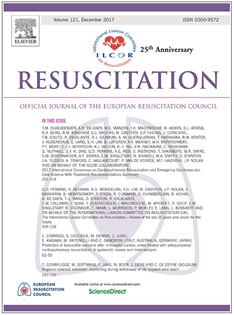OHCAR Annual Report 2016 and Utilising OHCAR Data for Research
All patients who suffer a witnessed or unwitnessed out-of-hospital cardiac arrest in Ireland, confirmed and attended to by the Emergency Medical Services (EMS), is registered on the out-of-hospital cardiac arrest register (OHCAR).
The primary sources of the OHCAR data are the Patient Care Report (PCR), the ambulance dispatch data from the National Ambulance Service (NAS) and Dublin Fire Brigade (DFB). In addition, there are data sharing arrangements with other organisations including Dublin Airport Authority (DAA), Irish Red Cross, Civil Defence, Irish Coast Guard and the Order of Malta. OHCAR is working to find ways of recording data captured by Community First Responder groups as currently it is not fully reflected in the OHCAR data.
Key messages from this year’s Annual Report:
- 2,389 OHCA incidences recorded on OHCAR
- 67% happened at home
- 49% were bystander witnessed
- 84% had bystander CPR (B-CPR)
- 28% had Return of Spontaneous Circulation(ROSC) at any stage pre-hospital
- 21% had ROSC on arrival at hospital
- 7.8% were discharged alive
Here is the link to the full 2016 Report.
Utilising OHCAR Data
 The Out of Hospital Cardiac Arrest Register (OHCAR) project was established in June 2007 in response to a recommendation in the “Report of the Task Force on Sudden Cardiac Death” and again in the policy documents “Changing Cardiovascular Health” and the “Emergency Medicine Programme Strategy”.
The Out of Hospital Cardiac Arrest Register (OHCAR) project was established in June 2007 in response to a recommendation in the “Report of the Task Force on Sudden Cardiac Death” and again in the policy documents “Changing Cardiovascular Health” and the “Emergency Medicine Programme Strategy”.
Since 2012, OHCAR has national coverage and is one of a small number of out of hospital cardiac arrest (OHCA) registries in Europe with national coverage. Many other European countries operate OHCA registers with partial geographical and/or intermittent coverage.
There have been many publications in academic journals utilising the OHCAR data and one such recent publication in ‘Resuscitation’, the Official Journal of the European Resuscitation Council is titled “
The MERIT 3 project; Alerting general practitioners to cardiac arrest in the community”.
Traditionally GPs are not informed, realtime, of cardiac arrests in their communities as they are not linked to a statutory ambulance service. This article examines the feasibility, uptake and outcome for the patient and the family of having a local response, in a rural community, utilising a text alert being send from the HSE National Ambulance Service control centre computer system. This could potentially provide the vital link in the of out-of-hospital cardiac arrest survival for the patient who lives in a rural community.